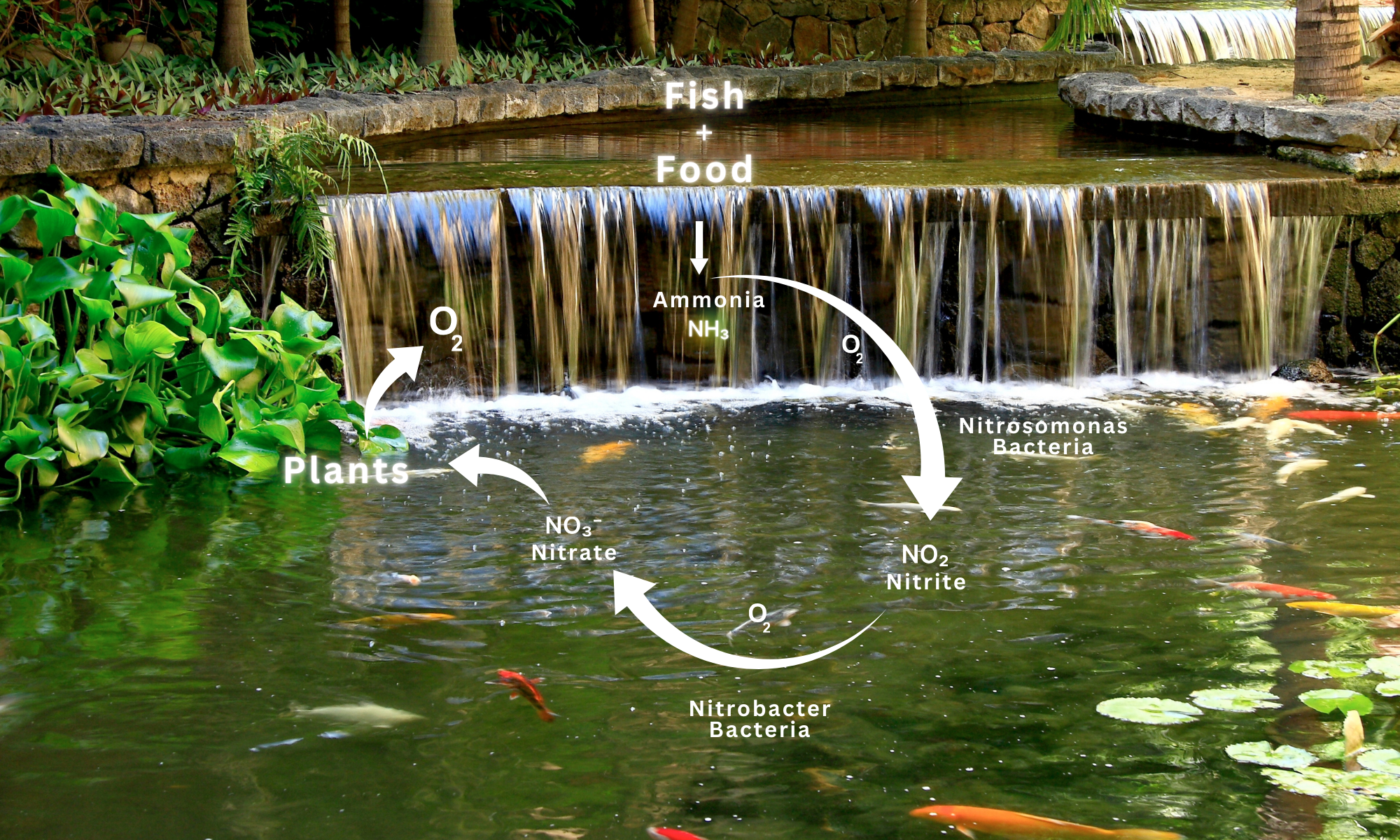The nitrifying process is a crucial part of maintaining a healthy aquarium or pond. It involves the conversion of toxic ammonia into less harmful compounds, ensuring the water remains safe for fish and other aquatic life. Understanding this process can help aquarium and pond owners manage water quality effectively and prevent common issues like ammonia poisoning.
What is the Nitrifying Process?
The nitrifying process is a biological filtration system carried out by beneficial bacteria. These bacteria break down toxic substances, primarily ammonia, which is produced by fish waste (fun fact: fish can also excrete pure ammonia as waste through their gills), uneaten food, and decaying organic matter. The process occurs in two main stages:
-
Ammonia to Nitrite (Nitritation)
Ammonia (NH₃) is highly toxic to aquatic life, even at low levels. In the first stage of nitrification, Nitrosomonas bacteria convert ammonia into nitrite (NO₂⁻). While nitrite is less toxic than ammonia, it is still harmful to fish, especially in higher concentrations. -
Nitrite to Nitrate (Nitrification)
The second stage is the conversion of nitrite into nitrate (NO₃⁻), which is much less harmful. This is carried out by a different group of bacteria called Nitrobacter. Nitrate is a relatively safe compound, but in high levels, it can still lead to health problems for fish and promote unwanted algae growth.
Why is the Nitrifying Process Important?
The nitrifying process is essential because it helps maintain water quality by reducing toxic levels of ammonia and nitrite. Without this biological filtration, harmful substances would accumulate, leading to poor water quality and potentially fatal conditions for fish and other aquatic creatures.
The Role of Beneficial Bacteria
Beneficial bacteria are the key players in the nitrification process. They live in the substrate, filter media, and other surfaces in the aquarium or pond. It takes time for these bacteria to establish a stable colony, a process known as cycling. During cycling, it’s common to see temporary spikes in ammonia and nitrite levels until the bacteria populations grow and become efficient at processing these compounds. In established systems, the bacteria continue to process waste efficiently, provided the water conditions remain stable. If needed, you can also supplement your beneficial bacteria population.
Factors Affecting Nitrification
Several factors can influence the effectiveness of the nitrification process:
-
Water Temperature: Beneficial bacteria thrive in warmer water, typically between 65°F and 80°F (18°C to 27°C). Extremely cold or hot water can slow or stop the process.
-
Oxygen Levels: Nitrifying bacteria require oxygen to perform their job, so proper aeration is essential in both aquariums and ponds. Adding aerators or beautiful pond features, such as spillways or fountains, can all help increase aeration.
-
pH and KH: A stable pH between 7.0 and 8.5 is ideal for nitrifying bacteria. Water that is too acidic or too alkaline can hinder bacterial activity. One key to a stable pH is by keeping alkalinity (KH) above more than 100 parts per million of carbonates, consider using a KH stabilizer to help.
-
Ammonia Levels: If ammonia levels are too high for prolonged periods, it can overwhelm the bacteria, leading to toxic conditions in the water.
-
Plants: Adding plants that compete with algae for the nutrients in the water is a great way to assist your nitrification process.
Maintaining the Nitrification Process
To support the nitrifying bacteria and maintain a healthy nitrogen cycle:
-
Perform regular water changes to prevent nitrate build-up.
-
Avoid overfeeding fish, as excess food leads to higher ammonia levels. Always scoop out uneaten food if possible.
-
Ensure proper filtration and aeration to support bacterial colonies.
-
Monitor water parameters utilizing water quality test kits regularly to keep track of the process.
Conclusion
The nitrifying process is essential for keeping water safe and healthy in both aquariums and ponds. By converting toxic ammonia into less harmful compounds, nitrifying bacteria help maintain a stable environment for aquatic life. Understanding and supporting this process through proper water management practices is key to a thriving aquatic ecosystem.

